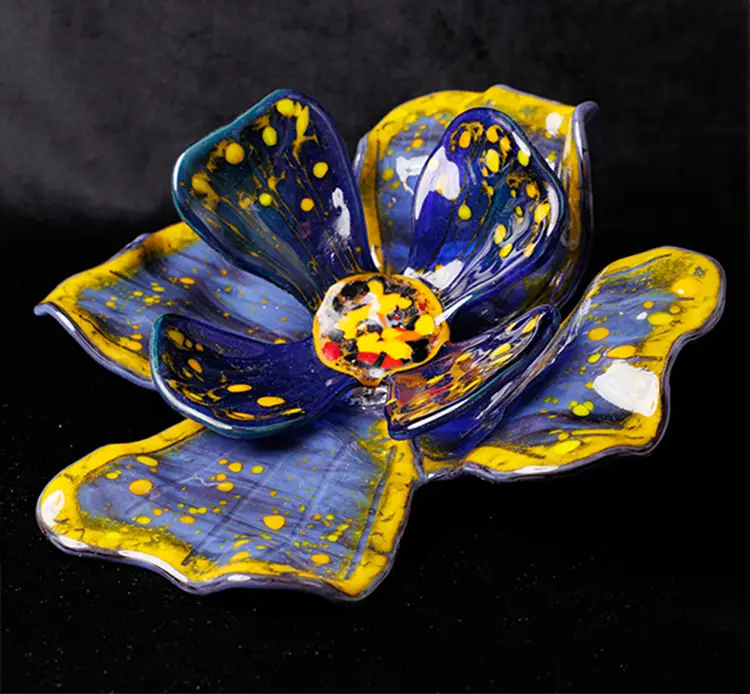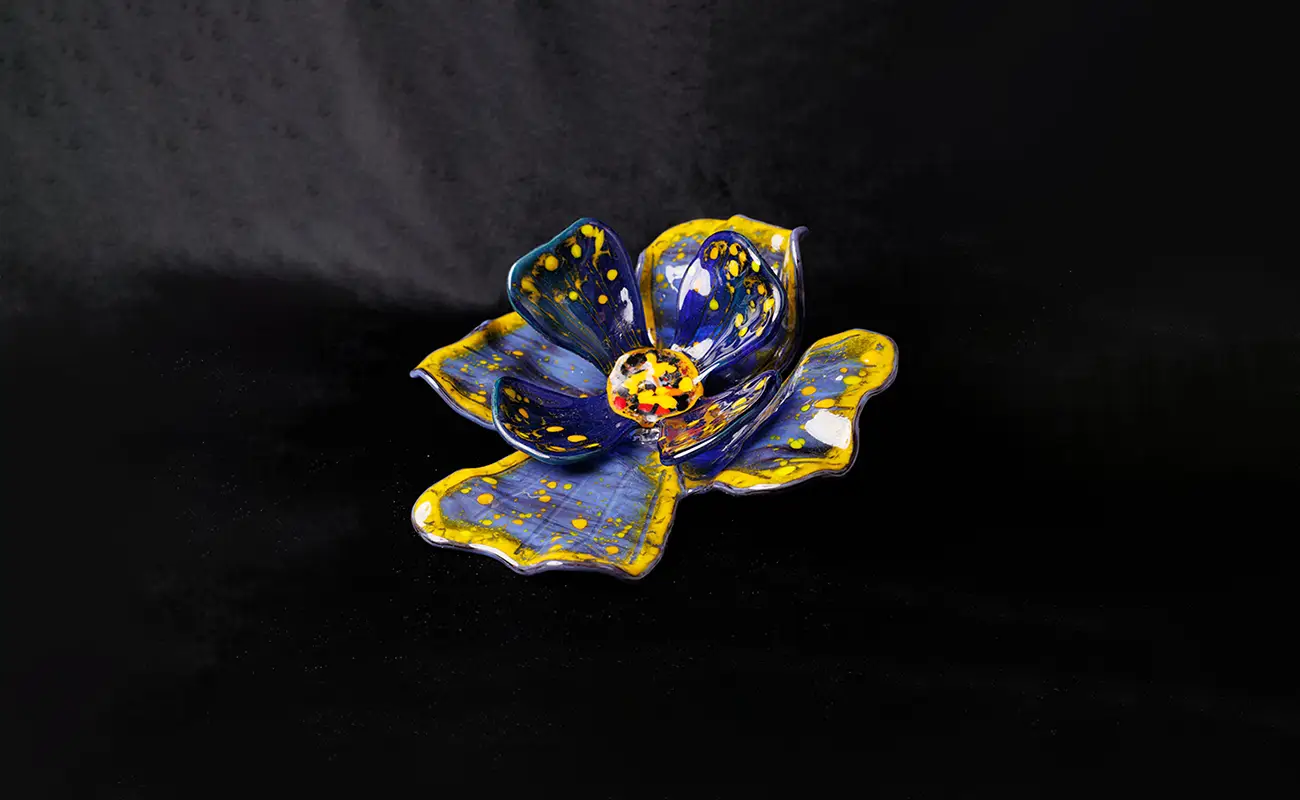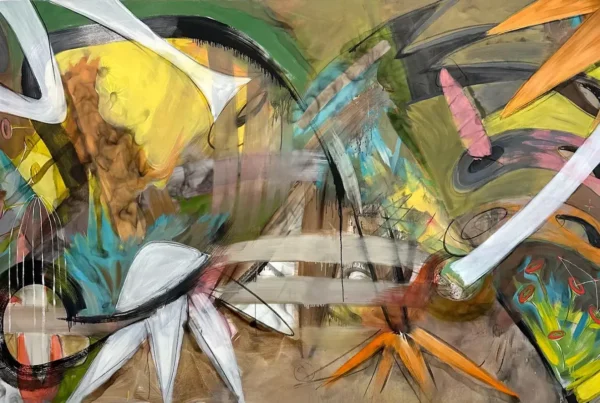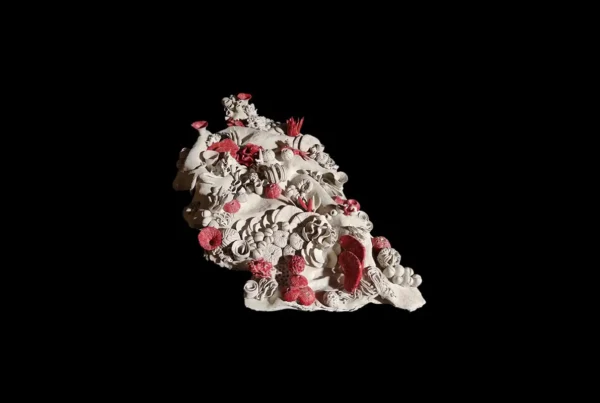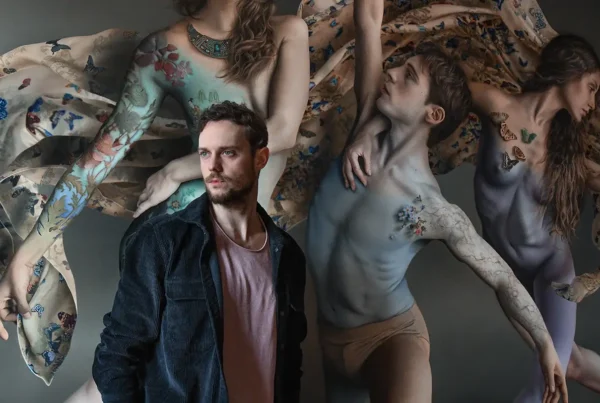“The most challenging, and at the same time the most rewarding, aspect of my work lies in the uncertainty of the final result.”
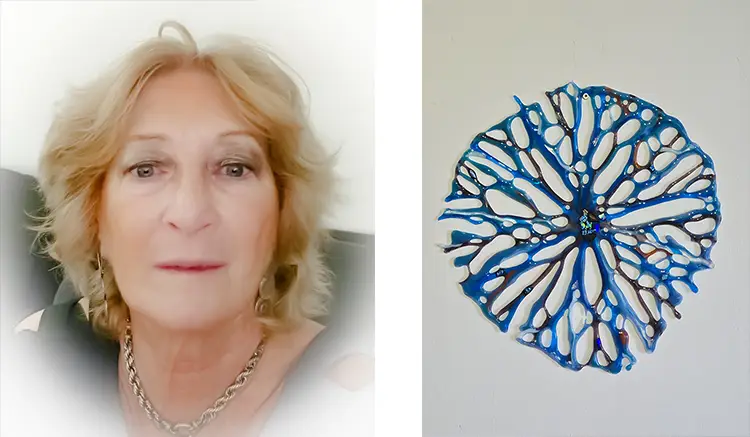
The Spark of Transformation
Architect by education and artist by vocation, Fanny Finchelman’s journey from structural design to luminous expression reveals a compelling narrative of rediscovery. Based in Argentina, her transition from the precision of architecture to the intuitive experimentation of fused glass speaks volumes about her desire to connect imagination with tactile reality. Initially skeptical of glass as a medium, perceiving it as unyielding and hazardous, her encounter with the studio of Miguel Diez in Buenos Aires marked a defining moment. That first experience redefined her creative trajectory, opening up a new dimension where fragility and strength coexist in molten harmony.
Her background in architecture, acquired at the University of Córdoba, continues to inform her creative process. Each piece is approached with an eye for structure, proportion, and intent, yet Finchelman often allows intuition to disrupt the blueprint. This dynamic between method and spontaneity brings a subtle tension to her work, where precision meets unpredictability. Years of ceramics as a hobby had already introduced her to tactile experimentation, but glass fusing became a deeper exploration of limits—emotional, technical, and artistic. Over time, her practice evolved from cautious trial to bold innovation, shaped by a blend of formal training and instinctive curiosity.
The early stages of her career were defined by hands-on learning and a growing network of international collaborations. Rather than rely solely on formal instruction, she immersed herself in experimentation, letting failures and successes shape her voice. Through this process, Finchelman began to develop a language of her own, one that merges design thinking with artistic spontaneity. Each project became an opportunity to blur the line between utility and wonder, inviting viewers to engage with glass not as a functional object, but as a portal into emotion, memory, and sensory experience.
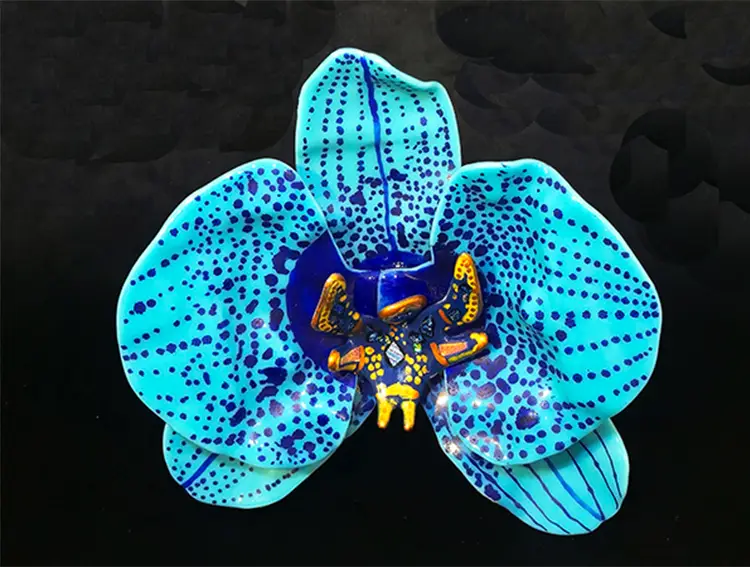
Fanny Finchelman: A Vocabulary of Change
Fanny Finchelman’s approach to glass art is characterized by perpetual transformation. She resists settling into a recognizable style, choosing instead to remain in constant dialogue with her materials and techniques. This dedication to evolution drives her to explore new possibilities with every piece she creates. Rather than repeat a successful formula, she prefers to challenge both herself and the boundaries of fused glass. Through this mindset, she has contributed significantly to the development of innovative techniques, bridging traditional South American methods with established practices in Europe and the United States.
This fusion of regional approaches has allowed her to carve out a distinctive identity within the contemporary glass art scene. By blending the expressive nuances of Argentine glasswork with the technical rigor of Western traditions, she generates works that are both culturally rich and visually arresting. Her practice encompasses a wide variety of processes, including the controlled fusion of sheet glass, powdered pigments, and enamels. The resulting pieces are not just objects of visual interest, but studies in transparency, texture, and chromatic depth. Each layer adds complexity, inviting close inspection and reflection.
Rather than seeking perfection, Finchelman embraces the unknown. Her evolving techniques allow the material to behave in ways that surprise even her. This unpredictability becomes a co-creator in her process, reinforcing her belief that true artistry lies in listening to the work as it emerges. Glass, once perceived as rigid and dangerous, is now her medium of endless variation. It becomes pliable under heat, responsive to gesture, and uniquely capable of capturing emotion in its glossy stillness. For Finchelman, the most important constant is change itself—a commitment to never create the same work twice.
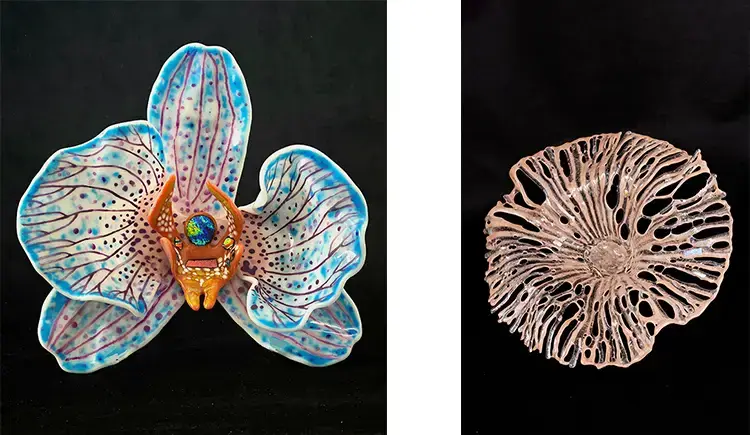
Guided by Vision, Shaped by Life
The influences that shape Fanny Finchelman’s work are diverse and layered, extending far beyond the realm of glass art. While artists such as Toots Zynsky, Dale Chihuly, Lino Tagliapietra, and Narcissus Quagliata have inspired her with their daring approaches to color, form, and conceptual depth, her strongest artistic compass remains the experience of daily life. Moments of clarity, fleeting emotions, and unspoken questions often serve as the genesis for new works. She frequently envisions ideas in dreams or in mundane surroundings, translating these ephemeral sensations into material forms through a process that is as intuitive as it is technical.
This intimate connection to lived experience ensures that her art never feels detached or formulaic. Instead, each piece is an extension of thought and feeling, shaped by the unpredictable currents of everyday existence. Her work often begins without a fixed endpoint; instead, it grows organically from a sense of curiosity or an emotional impulse. This openness to the unknown fuels her creativity and encourages a level of authenticity that resonates with audiences across cultures and disciplines. The act of creation becomes a meditative practice, where each layer of glass is a layer of self—exposed, refracted, and transformed.
Finchelman’s approach is as much philosophical as it is technical. She views her work as a continuous dialogue between inspiration and materiality. Even her most complex pieces begin with a moment of wonder—an instinct, a vision, or an emotion she cannot ignore. That initial spark leads to questions, and those questions guide her through processes that often yield unanticipated results. In this way, her practice is deeply embedded in a cycle of observation, transformation, and reflection. The finished pieces do not merely reflect her influences; they also become points of origin for future explorations.
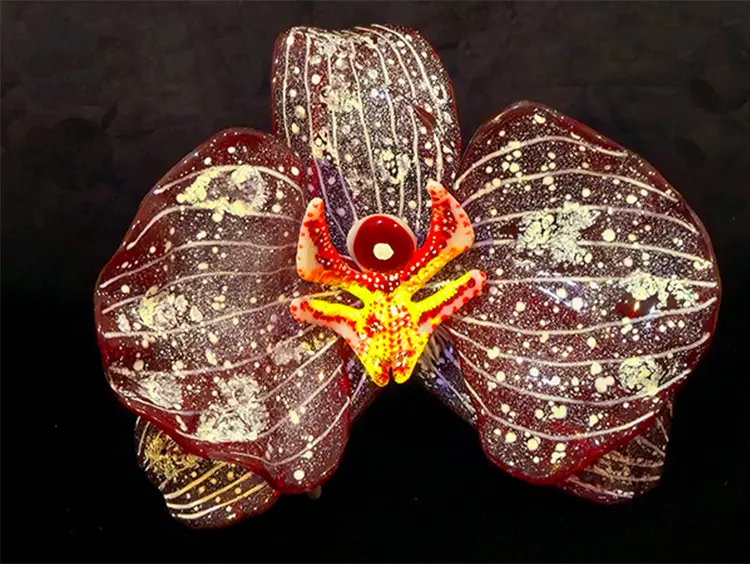
Fanny Finchelman: Between Control and Surrender
Fanny Finchelman’s daily practice is rooted in a delicate balance between control and chance. Rather than begin with a fully formed image, she sets technical and conceptual parameters, allowing the creative process to evolve within these bounds. These initial frameworks may stem from a feeling or idea she wants to investigate, but they are never so rigid as to prevent discovery. This openness allows the work to unfold organically, often revealing unexpected beauty through unplanned interactions of heat, material, and design. The process is not unlike sketching in three dimensions, where the drawing is made with layers of glass and the kiln serves as the final brushstroke.
The inherent unpredictability of fused glass presents a unique challenge. Artists often refer to the whims of the “kiln gods” to describe the mysterious forces that can make or break a piece during firing. For Finchelman, learning to engage with this uncertainty has become both a technical and emotional exercise. It demands patience, persistence, and a willingness to relinquish control at crucial moments. Rather than view unpredictability as an obstacle, she treats it as a collaborator. Each firing becomes a conversation with the material, in which both artist and glass negotiate the outcome.
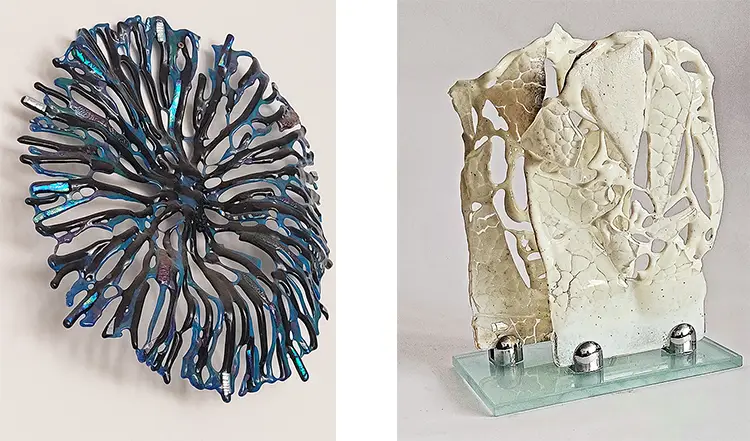
Over the years, she has completed numerous commissions, creating installations that bring light and color into private homes, office buildings, and company spaces. She also enjoys designing smaller, custom-made pieces—whether as unique gifts or as personal accents for the home. Each project is approached as a collaboration, shaped to reflect both the space and the people who will live with the work, making every piece truly one of a kind.
Finchelman’s current phase is marked by intense productivity and public engagement. Her works have appeared in prominent art fairs across Europe and the United States, including Affordable Art Fair in New York, the Biennale of Basel, the Monaco Signature exhibition, and Veranearte in Miami. She is currently preparing for a major installation at an upcoming Art Basel fair in Miami, where her signature glass flowers will take center stage. Alongside this, she is producing a video tutorial on these floral creations, responding to widespread interest from fellow artists. These parallel projects reflect the dual passions that drive her forward: creating compelling art and sharing her knowledge with a global community.
